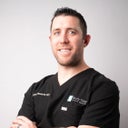To assess your candidacy for breast augmentation we need to see quality pictures.

